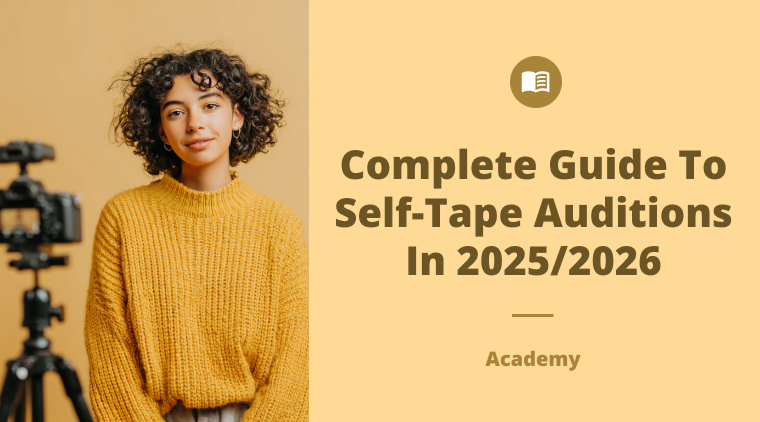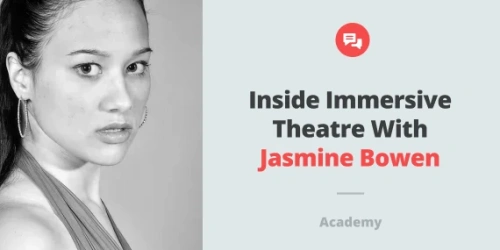Choose Where The Self-Tape Audition Will Take Place
While of course there is no official rule against it, filming your self-tape audition during busy everyday settings, e.g., while riding the metro, would be ill-advised. The environment appearing in the self-tape audition is one of the key components that indicate how seriously and professionally the respective performer appears to casting directors watching it.
When self-taping for auditions, performers should pick a space where external noises are limited to the bare minimum, if any at all. Such unwanted noises may include various common household sounds, traffic noises outside, or even nearby people, from family members, to neighbors, and coworkers, talking. All such external noises during the audition can be highly distracting and affect the impressions from the performance.
Similar to unwanted noises, the background of the self-tape audition can also turn out to be a distraction from the performance. In a perfect scenario, the acting or modeling hopeful should aim to have a single colored flat and simple background, without any extra objects included, e.g., framed paintings and photographs, clocks, posters, etc. Bright wall colors, including yellow or red paint, can also pull away the attention from the audition performance and even wash out skin tones, so look out for calmer background colors such as white or gray.
Alternatively, from finding a plain wall, there are digital background filters, or physical items such as everyday household items, bedsheets, which can hide the clutter in the back, and help the self-tapping in the case of no uncluttered background available at the given time period.
Prepare The Equipment For Self-Taping
Despite applying for a creative job in front of the camera instead of one behind it, the quality of the self-tape audition footage will still have a role to play in how successful it overall is.
The equipment the performer uses for the self-tapping is directly responsible for the video's quality. Thankfully, nowadays actors and models can avoid investing in expensive professional cameras since the built-in cameras of current generation smartphones and tablets can provide flawless video quality as well - after all, there are even full-length Hollywood movies that have been shot with iPhones. Regardless of the final choice of the best quality camera available, performers should remember to shoot their audition horizontally to keep the self-tape as professional-looking as possible.
Just do not think about holding the camera in your hand - shaky footage would be another sign of a seemingly amateurish approach to the audition. The best way to handle the filming would be by acquiring a tripod, as they are typically not only flexible to handle various devices but also normally are very affordably priced. By using such a portable stand, the footage quality will benefit from not only stability but also framing consistency by keeping the performer in the same shot for the length of the audition, thus providing a more polished final result. Importantly, it also allows the performer to fully focus on their performance instead of being distracted from it due to additional filming tasks. When necessary, performers should be sure they have adjusted the video framing so that all parts of the audition performance can be seen, including physical gestures, movements, and facial expressions.
Lighting is also important - not only for the general visibility but also for how well the expressions of the performer can be seen in the final audition video. Natural light usually should be enough, but artificial light lamps, such as ring light or showbox light, can be easy-to-use and affordable options for such a task.
Finally, for actors, sound is just as important as the visuals during auditions. Thankfully, most current smart devices have microphones, which should be absolutely fine for the task of capturing the self-tape audition performance. To improve the quality of sound further, performers can invest in external microphones, including clip-on microphones or on-camera microphones, depending on their own individual wishes.
Get Ready For The Performance
The same as it would be in the case of traditional auditions, the self-tapping also requires being well-prepared for the performance. For actors, this involves thoroughly getting to learn the given lines or script, as well as trying to understand the respective character, their motivations, and the wider context of the part. Similarly, models should also carefully acquaint themselves with any materials given before self-taping their audition to understand the concept and what sort of aesthetic the casting director might be looking for in the project.
As with any other type of auditions, the goal with self-tape auditions is not only to precisely follow the orders of the casting staff but also to stand out amongst the competition. If the performer is ready to add their individual twist or interpretation to the given materials, this is the right time, as there will always be the possibility to do another video before ultimately applying it to the casting director. The format of self-tapping auditions even allows performers to reach for external feedback for possible improvements and tips before the footage finally reaches the casting staff. There can be a few takes filmed, so later the best one can be chosen. While not limited to just self-tapping, using such external off-camera help, better known as a scene partner, or reader, can also help to prepare better for the final video.
Besides being specifically asked to, actors and models can use props if it improves the performance, but they should also try not to underdo the appearances of such items, as they might risk taking the attention away from their own performance.
Finally, regarding the look of actors and models during the auditions, less is more. Unless there are specific instructions for the self-tapping, performers should use their own natural looks for the video, and avoid heavy make-up or strange hairstyles. The clothing choices in this case should also be simple and minimalistic, avoiding colors and patterns that may distract attention away from their performance, including overly revealing clothes, as well as bright neon colors or busy patterns.
Final Steps Before The Submission
Once the self-tape audition video is finally done, the performer should film an introduction stating their name and the role they are auditioning for, which should be added as the first thing in the overall footage.
Make sure to rename the video file from whatever the devices have titled it, e.g., “video file”, or something similarly inexpressive. Unless there are specific instructions given by the casting staff, self-tape audition video file titles should certainly include at least the project title, the performer’s name, and surname.
Finally, upload it the way it has been instructed, or to a commonly used file-sharing platform to share the link with the casting director. Following that, performers should patiently await the results. Good luck!



